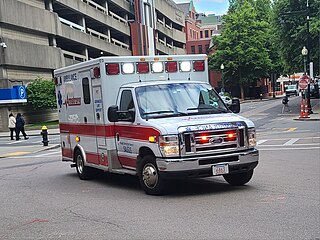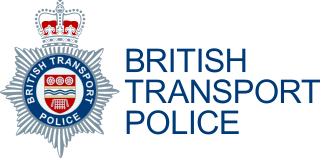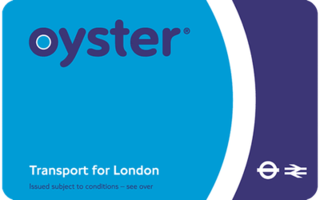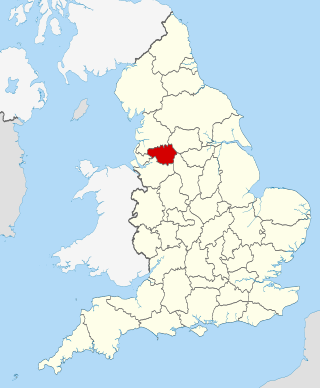Related Research Articles

The Docklands Light Railway (DLR) is an automated light metro system primarily serving the redeveloped Docklands area of London and providing a direct connection between London's two major financial districts, Canary Wharf and the City of London. First opened on 31 August 1987, the DLR has been extended multiple times, giving a total route length of 38 km. Lines now reach north to Stratford, south to Lewisham, west to Tower Gateway and Bank in the City of London financial district, and east to Beckton, London City Airport and Woolwich Arsenal. An extension to Thamesmead is currently being proposed.

The London Underground is a rapid transit system serving Greater London and some parts of the adjacent home counties of Buckinghamshire, Essex and Hertfordshire in England.

The history of public transport authorities in London details the various organisations that have been responsible for the public transport network in and around London, England - including buses, coaches, trams, trolleybuses, Docklands Light Railway, and the London Underground.

Transport for London (TfL) is a local government body responsible for most of the transport network in London, United Kingdom.

An ambulance is a medically-equipped vehicle used to transport patients to treatment facilities, such as hospitals. Typically, out-of-hospital medical care is provided to the patient during the transport. Ambulances are used to respond to medical emergencies by emergency medical services (EMS), and can rapidly transport paramedics and other first responders, carry equipment for administering emergency care, and transport patients to hospital or other definitive care. Most ambulances use a design based on vans or pickup trucks, though others take the form of motorcycles, buses, limousines, aircraft and boats.

The London congestion charge is a fee charged on most cars and motor vehicles being driven within the Congestion Charge Zone (CCZ) in Central London between 7:00 am and 6:00 pm Monday to Friday, and between 12:00 noon and 6:00 pm Saturday and Sunday.

British Transport Police is a national special police force that polices the railway network of England, Wales and Scotland. The force polices more than 10,000 miles of track and more than 3,000 stations and depots.

The Blackwall Tunnel is a pair of road tunnels underneath the River Thames in east London, England, linking the London Borough of Tower Hamlets with the Royal Borough of Greenwich, and part of the A102 road. The northern portal lies just south of the East India Dock Road (A13) in Blackwall; the southern entrances are just south of The O2 on the Greenwich Peninsula. The road is managed by Transport for London (TfL).

The Oyster card is a payment method for public transport in London in England, United Kingdom. A standard Oyster card is a blue credit-card-sized stored-value contactless smart card. It is promoted by Transport for London (TfL) and can be used on travel modes across London including London Buses, London Underground, the Docklands Light Railway (DLR), London Overground, Tramlink, some river boat services, and most National Rail services within the London fare zones. Since its introduction in June 2003, more than 86 million cards have been used.

London Buses is the subsidiary of Transport for London (TfL) that manages most bus services in London, England. It was formed following the Greater London Authority Act 1999 that transferred control of London Regional Transport (LRT) bus services to TfL, controlled by the Mayor of London.

Transport for Greater Manchester (TfGM) is a local government body responsible for co-ordinating transport services throughout Greater Manchester in North West England. It is an executive arm of the Greater Manchester Combined Authority (GMCA), the city region's administrative authority. The strategies and policies of Transport for Greater Manchester are set by the GMCA and its Greater Manchester Transport Committee (GMTC). The committee is made up of 33 councillors appointed from the ten Greater Manchester boroughs, as well as the Mayor of Greater Manchester.

The London Underground 1992 Stock is a type of rolling stock used on the Central and Waterloo & City lines of the London Underground. A total of 85 eight-car trains were built for the Central line and 5 four-car trains were built for the Waterloo & City line.
On United Kingdom roads, the term red route may refer to a stretch of road with painted red lines signifying that vehicles cannot stop there, or to a road which has historically high accident rates.

The Hammersmith flyover is an elevated roadway in West London which carries the A4 arterial road over and to one side of the central Hammersmith gyratory system, and it links together the Cromwell Road extension with the start of the Great West Road. It is one of the first examples of an elevated road using reinforced concrete.
The Roads and Transport Policing Command, formerly the Safer Transport Command and Transport Operational Command Unit, is a unit of the London Metropolitan Police Service that polices roads, buses, bus routes, taxis and minicabs. It does not police national railways in London, London Underground, Docklands Light Railway or Tramlink, which fall under the remit of the British Transport Police (BTP).
Traffic signal preemption is a system that allows an operator to override the normal operation of traffic lights. The most common use of these systems manipulates traffic signals in the path of an emergency vehicle, halting conflicting traffic and allowing the emergency vehicle right-of-way, thereby reducing response times and enhancing traffic safety. Signal preemption can also be used on tram, light-rail and bus rapid transit systems, to allow public transportation priority access through intersections, and by railroad systems at crossings to prevent collisions.

London Overground is a suburban rail network serving London and its environs. Established in 2007 to take over Silverlink Metro routes, it now serves a large part of Greater London as well as the home county of Hertfordshire, with 113 stations on the 6 lines that make up the network.

London has an extensive and developed transport network which includes both public and private services. Journeys made by public transport systems account for 37% of London's journeys while private services accounted for 36% of journeys, walking 24% and cycling 2%,according to numbers from 2017. London's public transport network serves as the central hub for the United Kingdom in rail, air and road transport.

iBus is an Automatic Vehicle Location (AVL) system to improve London's buses using technology installed by Siemens. The system tracks all London's buses, providing passengers with audio-visual announcements and improved information on bus arrivals, with plans to trigger priority at traffic lights.
References
- ↑ "Evidence for Transport Committee's investigation into 2012 transport" (PDF). Archived from the original (PDF) on 30 October 2012. Retrieved 24 June 2013.
- ↑ "Enfield Council Corporate Tree Management Strategy". Archived from the original on 4 March 2016. Retrieved 24 June 2013.
- ↑ "Duke of York opens TfL control centre at Palestra in Blackfriars Road". Archived from the original on 13 September 2013. Retrieved 24 June 2013.
- ↑ "TfL plans £25 million London Underground control centre at Palestra". Archived from the original on 17 June 2013. Retrieved 24 June 2013.
- ↑ Taylor, Craig (2012). Londoners: The Days and Nights of London Now--As Told by Those Who Love It, Hate It, Live It, Left It, and Long for It. HarperCollins. p. 103. ISBN 9780062096937.